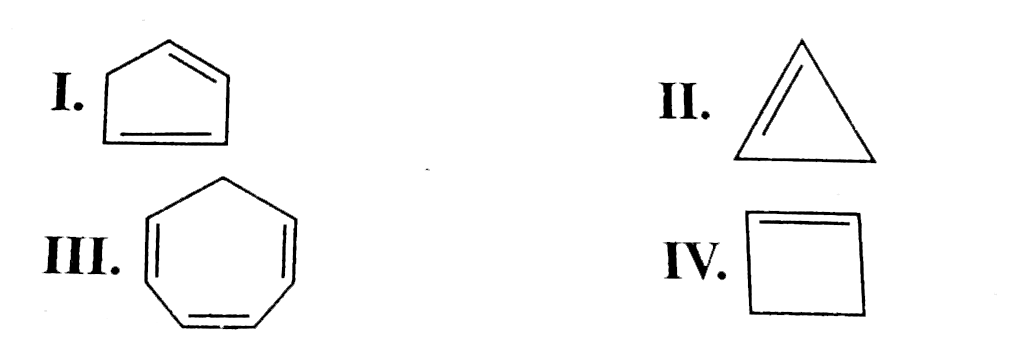Enzyme that does not follow Km value is
Exoenzyme
Allosteric enzyme
Isoenzyme
Pepsin.
The correct Answer is:B
To solve the question "Enzyme that does not follow Km value is," we will follow these steps:
Step 1: Understand the Km Value
- The Km value, known as Michaelis constant, is a crucial parameter in enzyme kinetics. It represents the substrate concentration at which the reaction rate is half of its maximum velocity (V_max).
- A low Km value indicates high affinity between the enzyme and its substrate, while a high Km value indicates low affinity.
Hint for Step 1: Remember that Km reflects the affinity of the enzyme for its substrate.
Step 2: Identify Types of Enzymes
- The question provides several options: exoenzyme, allosteric enzyme, isoenzyme, and peptidine.
- We need to analyze each type of enzyme to determine which one does not follow the Km value.
Hint for Step 2: Consider the characteristics of each enzyme type listed in the options.
Step 3: Analyze Allosteric Enzymes
- Allosteric enzymes do not follow Michaelis-Menten kinetics. Instead, they exhibit a sigmoid (S-shaped) saturation curve when plotted against substrate concentration.
- This behavior is due to the cooperative binding of substrates, which is not described by a simple Km value.
Hint for Step 3: Focus on the behavior of allosteric enzymes in relation to substrate binding.
Step 4: Conclusion
- Based on the analysis, the enzyme that does not follow the Km value is the allosteric enzyme. This is because allosteric enzymes do not exhibit a simple hyperbolic relationship between substrate concentration and reaction rate, which is what Km describes.
Final Answer: The enzyme that does not follow Km value is allosteric enzyme.
- The Km value, known as Michaelis constant, is a crucial parameter in enzyme kinetics. It represents the substrate concentration at which the reaction rate is half of its maximum velocity (V_max).
- A low Km value indicates high affinity between the enzyme and its substrate, while a high Km value indicates low affinity.
- The question provides several options: exoenzyme, allosteric enzyme, isoenzyme, and peptidine.
- We need to analyze each type of enzyme to determine which one does not follow the Km value.
- Allosteric enzymes do not follow Michaelis-Menten kinetics. Instead, they exhibit a sigmoid (S-shaped) saturation curve when plotted against substrate concentration.
- This behavior is due to the cooperative binding of substrates, which is not described by a simple Km value.
- Based on the analysis, the enzyme that does not follow the Km value is the allosteric enzyme. This is because allosteric enzymes do not exhibit a simple hyperbolic relationship between substrate concentration and reaction rate, which is what Km describes.
Topper's Solved these Questions
- MOLECULES OF THE CELLBOOK - DINESH PUBLICATION ENGLISHCHAPTER - MOLECULES OF THE CELLEXERCISE - RQ
649 Videos
- MOLECULES OF THE CELLBOOK - DINESH PUBLICATION ENGLISHCHAPTER - MOLECULES OF THE CELLEXERCISE - CYG
43 Videos
- MICROBES IN HUMAN WELFAREBOOK - DINESH PUBLICATION ENGLISHCHAPTER - MICROBES IN HUMAN WELFAREEXERCISE - Brain Teasers-VIII
60 Videos
- MOLLUSCABOOK - DINESH PUBLICATION ENGLISHCHAPTER - MOLLUSCAEXERCISE - CYG
10 Videos
Similar Questions
Knowledge Check
In the equation above, k is a constant. For which of the following values f k does the equation have at least one re3al solution ?
A2B3C4D5
In an enzyme-mediated reaction, Km value is :
View SolutionGive the decreasing order of Ka value of the following compounds.

View SolutionWrite short notes on the following: (a) Enzyme specificity, (b) Enzyme inhibition.
View SolutionKm value is dependent upon
View SolutionWhich of the following has highest Ka value?
View SolutionAll enzymes are not proteins. Which of the following enzyme is not a protein?
View SolutionRead the following :
(a) Low temperature preserves the enzyme
(b) Enzyme gets denatured at high temperature
(c ) Enzyme does not get dnatured at high temperature
(d) Competitive inhibitor competes with the product formed
Which of the following statement are true ?
View Solution
